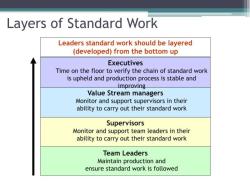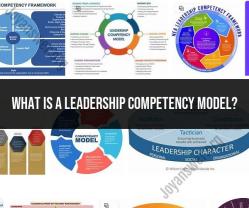What are the qualities of a bad leader?
A bad leader exhibits traits and behaviors that can have detrimental effects on a team, organization, or group. These negative qualities can undermine morale, hinder productivity, and create a toxic work environment. Here are some common qualities of a bad leader:
Lack of Integrity: A leader without integrity is often dishonest, unethical, and inconsistent in their actions and decisions. This erodes trust among team members and stakeholders.
Poor Communication: Bad leaders struggle to communicate effectively. They may be unclear, dismissive of others' input, or fail to listen actively to team members' concerns and ideas.
Micromanagement: Bad leaders tend to micromanage their team, not trusting them to perform their tasks independently. This can stifle creativity, discourage initiative, and lead to frustration among team members.
Lack of Empathy: A lack of empathy means a leader is insensitive to the needs, feelings, and perspectives of others. This can result in a hostile or unsupportive work environment.
Authoritarianism: Authoritarian leaders exert excessive control, often making decisions without input from the team. They may use fear or intimidation to maintain dominance.
Inconsistency: Inconsistent leaders have unpredictable behaviors and decisions. Team members never know what to expect, leading to confusion and instability.
Blame-Shifting: Bad leaders frequently blame others for their mistakes or failures. They avoid taking responsibility for their actions and deflect blame onto team members.
Closed-Mindedness: Closed-minded leaders resist new ideas and perspectives. They may reject feedback or refuse to consider alternative solutions, hindering innovation and growth.
Lack of Accountability: Bad leaders avoid accountability for their actions and decisions. They may not admit their mistakes or learn from failures.
Ego-Centrism: Leaders who are overly focused on their own success and recognition can undermine teamwork and cooperation. They may take credit for others' work and downplay their contributions.
Favoritism: Favoritism occurs when a leader shows preferential treatment to certain team members, often based on personal relationships rather than merit. This can lead to resentment and division within the team.
Resistance to Feedback: Bad leaders are resistant to receiving feedback, viewing it as a threat to their authority. They may react defensively or dismiss constructive criticism.
Lack of Transparency: Transparency is crucial for building trust. Leaders who withhold information or keep secrets from their team members create an atmosphere of suspicion.
Failure to Develop Others: Neglecting the professional development and growth of team members is a sign of a bad leader. They may not provide opportunities for skill-building or career advancement.
Short-Term Focus: Leaders who prioritize short-term gains over long-term sustainability can make detrimental decisions that harm the organization's future.
It's important to recognize that individuals may exhibit some of these negative qualities from time to time, but a persistent pattern of these behaviors characterizes a bad leader. Effective leadership involves continuous self-awareness and a commitment to personal growth and improvement. Identifying and addressing these negative traits can help individuals become better leaders over time.
Bad Leadership Qualities That Can Undermine Success
Bad leadership qualities can undermine success in a number of ways. They can create a negative work environment, lead to low employee morale, and damage the organization's reputation.
Here are some bad leadership qualities to avoid:
- Micromanagement: Micromanagers are leaders who try to control every aspect of their team's work. This can lead to frustration and resentment among team members, and it can also prevent them from being creative and taking initiative.
- Poor communication: Effective communication is essential for good leadership. Leaders who are poor communicators may have difficulty delegating tasks, giving feedback, and resolving conflicts. This can lead to misunderstandings and confusion among team members.
- Lack of trust: Leaders who do not trust their team members may be reluctant to delegate tasks or give them autonomy. This can lead to a decrease in employee engagement and productivity.
- Unfairness: Leaders who are unfair may favor certain team members over others or give out rewards and punishments unfairly. This can create a toxic work environment and lead to low employee morale.
- Dishonesty: Leaders who are dishonest are not trustworthy. This can damage the organization's reputation and make it difficult to attract and retain top talent.
Toxic Leadership Behaviors to Avoid in Management
Toxic leadership behaviors are those that create a negative and unhealthy work environment. These behaviors can damage employee morale, productivity, and well-being.
Here are some toxic leadership behaviors to avoid:
- Bullying: Bullying is any form of aggressive or intimidating behavior. This can include verbal abuse, physical threats, and social isolation.
- Gaslighting: Gaslighting is a form of psychological manipulation in which the abuser tries to make the victim doubt their own sanity or perception of reality.
- Taking credit for others' work: Taking credit for others' work is a form of plagiarism. It is also a betrayal of trust and can be very demoralizing for team members.
- Playing favorites: Playing favorites is when a leader gives preferential treatment to certain team members over others. This can create a hostile and unfair work environment.
- Scapegoating: Scapegoating is when a leader blames others for their own mistakes or failures. This can create a culture of fear and distrust.
Overcoming Negative Attributes to Become a Better Leader
If you have any of the negative leadership qualities or behaviors listed above, there are steps you can take to overcome them.
Here are some tips:
- Identify your negative attributes and behaviors. The first step is to identify the negative attributes and behaviors that you need to work on. Once you know what your weaknesses are, you can start to develop a plan for improvement.
- Seek feedback from others. Ask your team members, peers, and manager for feedback on your leadership style. This feedback can help you to identify areas where you need to improve.
- Develop a plan for improvement. Once you have identified your negative attributes and behaviors, develop a plan for improvement. This plan may include setting goals, finding a mentor, or getting professional development training.
- Be patient. Overcoming negative leadership attributes and behaviors takes time and effort. Be patient with yourself and don't get discouraged if you don't see results immediately.
Becoming a better leader is a journey, not a destination. It takes time, effort, and dedication. However, the rewards of being a great leader are well worth the effort.













